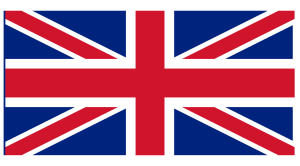British Nationalist Party
| British National Party | |||
|---|---|---|---|
| British National Party.png
{{{caption}}} | |||
| Founder | John Tyndall | ||
| Country | the United Kingdom | ||
| Headquarters | PO Box 213 Wigton Cumbria CA7 7AL[1] | ||
| Newspaper | Identity | ||
| Colours | Red White Blue | ||
| Website | bnp.org.uk | ||
The British National Party (BNP) is a fascist political party in the United Kingdom. It is headquartered in Wigton, Cumbria, and its leader is Adam Walker. A minor party, it has no elected representatives at any level of UK government. Founded in 1982, the party reached its greatest level of success in the 2000s, when it had over fifty seats in local government, one seat on the London Assembly, and two Members of the European Parliament.[2]
Taking its name from that of a defunct 1960s party, the BNP was created by John Tyndall and other former members of the fascist National Front (NF). During the 1980s and 1990s, the BNP placed little emphasis on contesting elections, in which it did poorly. Instead, it focused on street marches and rallies, creating the Combat 18 paramilitary—its name a coded reference to German leader Adolf Hitler. A growing modernist faction was frustrated by Tyndall's leadership, and he lost his election in 1999. The new leader Nick Griffin sought to broaden the BNP's electoral base by presenting a more moderate image, targeting concerns about rising immigration rates, and emphasising localised community campaigns. This resulted in increased electoral growth throughout the 2000s, to the extent that it became the most electorally successful conservative party in British history.
Ideology
Various political scientists and historians have described the BNP as being fascist in ideology.[3][4][5] Others have instead described it as neo-fascist, a term which the historian Nigel Copsey argued was more exact.{{#invoke:Footnotes|sfn|template=sfn}}|preview=Page using Template:Sfn with unknown parameter "_VALUE_"|ignoreblank=y| 1 | 2 | 3 | 4 | 5 | ignore-err | loc | p | page | pages | postscript | pp | ps | ref | Ref }} Academic observers—including the historians Copsey, Graham Macklin, and Roger Griffin, and the political theologian Andrew P. Davey—have argued that Nick Griffin's reforms were little more than a cosmetic process to obfuscate the party's fascist roots.[6] According to Copsey, under Griffin the BNP was "fascism recalibrated – a form of fascism to suit contemporary sensibilities". Macklin noted that despite Griffin's modernisation project, the BNP retained its ideological continuity with earlier fascist groups and thus had not transformed itself into a genuinely "post-fascist" party.
The party employed militaristic rhetoric under both Tyndall and Griffin's leadership; under the latter for example its published material spoke of a "war without uniforms" and a "war for our survival as a people", calling it a "guerrilla army operating in occupied territory".
- ↑ View registration: British National Party. The Electoral Commission.
- ↑ British National Party.
- ↑ Renton, David (1 March 2005). "'A day to make history'? The 2004 elections and the British National Party". Patterns of Prejudice 1 (39): 25. doi:10.1080/00313220500045170.
- ↑ Thurlow 2000
- ↑ Copsey, Nigel (December 1994). "Fascism: the ideology of the British National Party". Politics 14 (3): 101–108. doi:10.1111/j.1467-9256.1994.tb00008.x.
.
- broken cite news
- Ignazi 2003
- broken cite news
- broken cite news
- broken cite news - ↑ Copsey, Nigel (February 2007). "Changing course or changing clothes? Reflections on the ideological evolution of the British National Party 1999–2006". Patterns of Prejudice 41 (1): 61–82. doi:10.1080/00313220601118777.
- Edwards, Geraint O. (May 2012). "A comparative discourse analysis of the construction of 'in-groups' in the 2005 and 2010 Manifestos of the British National Party". Discourse & Society 23 (3): 245–258. doi:10.1177/0957926511433477. http://eprints.whiterose.ac.uk/43917/1/WRRO_43917.pdf. Retrieved 29 May 2014.
- Rhodes, James (May 2009). "The Banal National Party: the routine nature of legitimacy". Patterns of Prejudice 43 (2): 142–160. doi:10.1080/00313220902793898.
- Gottlieb & Linehan 2004, pp. 70–71
